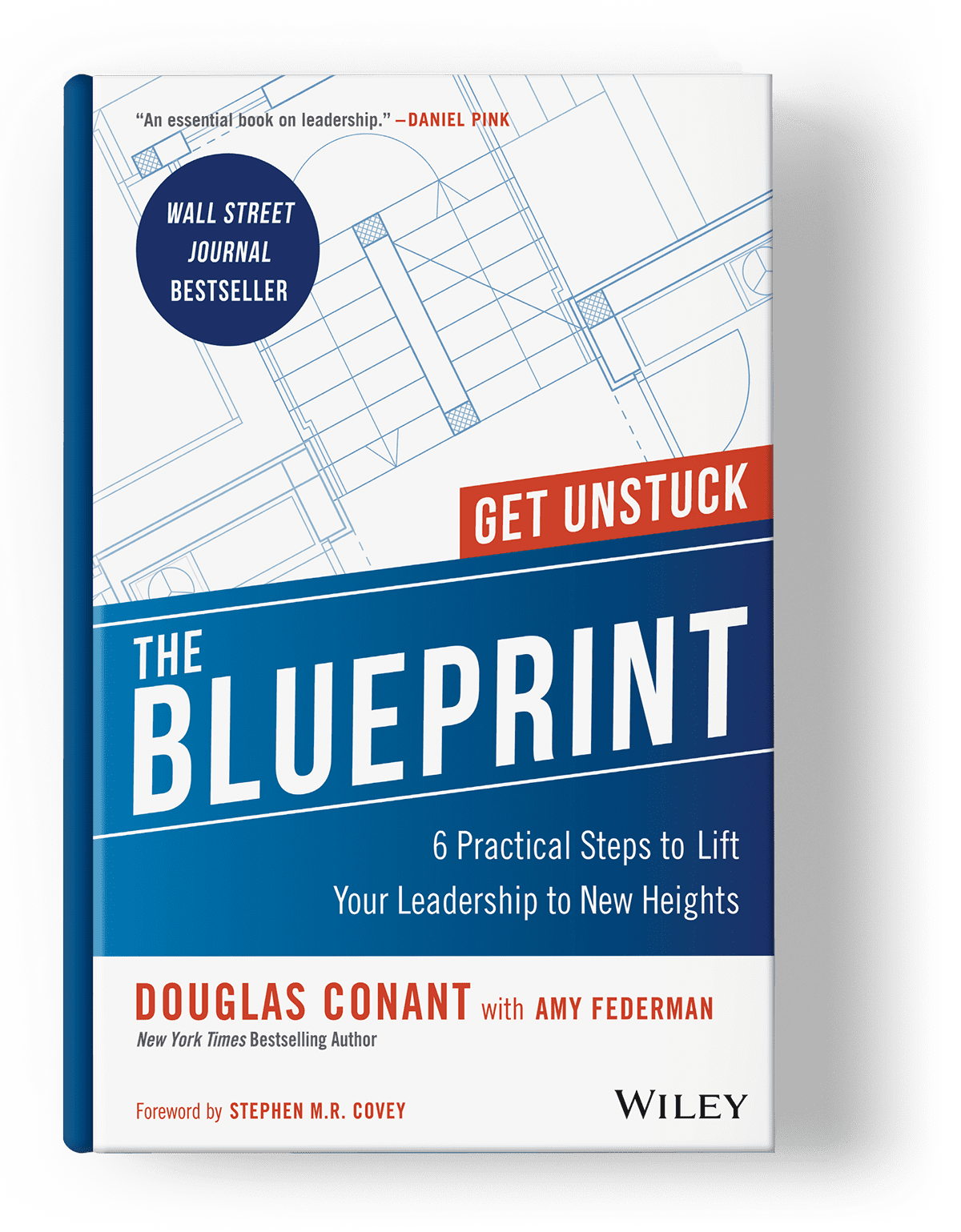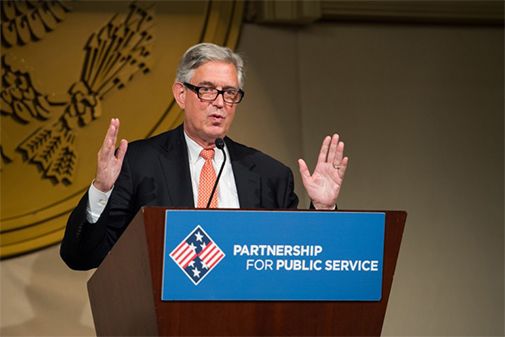10 Powerful Ways to Give Thanks with Your Leadership
This piece was originally published in 2017 and was most recently updated November, 2024.
This time of year, we celebrate the virtue of gratitude. Rightly so. The benefits of being grateful—both personally and professionally—are numerous and well-documented.
While we should flex our gratitude muscle throughout the year, it’s also important to take extra time during the holidays to pause, reflect, recharge, and re-commit to bringing gratitude to life in every area of our life.
For me, part of that process is reflecting on the ways we can bring more thankfulness into our leadership. Not just because it’s a “nice” thing to do but because it’s a crucial business imperative. Giving thanks is about making people feel valued. And research shows the highest performing teams and organizations are comprised of people who feel valued.
So, by giving thanks with our leadership, we can both feel more fulfilled as leaders and inspire better business results in the marketplace.
Here are 10 powerful ways you can give thanks with your leadership to get better results year-round:
1. Honor people with your time. You’re the leader. You’re busy. People understand that. But, what if you gave just a little more generously of your time?
I have found that the more I honor people with my time and devoted attention, the more they honor me right back with their commitment, hard work, and trust.
Find ways to give people an opportunity to connect with you, whether it’s walking around the hallways, making more time in your calendar for face-to-face meetings in-person or on zoom, or even just jumping on a 15-minute phone call to listen to ideas and offer your insights. A little goes a long way.
2. Hold better meetings. Meetings are an essential part of modern work life but they’re so often a time-wasting slog that employees can begin to dread them. It doesn’t have to be that way. By crafting clear rules around meetings, you can ensure they are productive and efficient.
Start by not scheduling them at wacky off-hours and commit to keeping them brief (whenever possible).
Then, make sure you’re just as prepared for them as your employees are. This way, people know you value their time as much as your own. And that you care about their work. It can make a huge difference. (You can read my full CEO Manifesto for Better Meetings here.)
3. Actually say “thank you” earnestly and often. Earlier in my career, I was fired from my job. It was thanks to the support of other people that I was able to get back on my feet.
One of the lessons I learned from the experience was the importance of saying thank you to the people who help lift you up.
Ever since, I’ve adopted a practice of hand-writing personalized thank-you notes to people in the organizations I’ve led. At last count, I’ve written over 30,000 notes to people at every level, in every imaginable department. They aren’t gratuitous or filled with platitudes. The notes celebrate specific achievements and contributions. It shows I’m paying attention. And that I’m deeply grateful.
Ask people what matters to them.
Some leaders think thank you “goes without saying” or that an employee’s paycheck is the thank you. It’s simply not the case. People want to hear it; they need to feel it. And there’s no downside to expressing gratitude when it’s been rightly earned with good work.
So find a way to explicitly say thank you. Maybe handwritten notes aren’t your style. That’s fine. Find something that works for you and commit to the practice.
4. Provide opportunities to learn and grow. People want to learn. Investing in their development is good for them, good for you, and good for business.
In today’s fiercely complex world, organizations must grow or die. The companies that win are the ones that are always adapting, always learning, always getting better. The best way to ensure your organization keeps pace is by championing a learning culture. That means providing tangible and plentiful opportunities for people to learn and grow. When you help people thrive, they get more engaged and stay excited about work.
People don’t want to remain stagnant; they want to embrace their full capability. You can meaningfully value them by supporting their development. In my experience, if you give people the tools and energy to do their jobs with distinction, they will perform better and stick around longer.
5. Give the gift of giving back. One of the most powerful ways to value people is by helping them become more involved in causes they care deeply about. There is a growing awareness about the business case for corporate social responsibility (CSR) and the benefits of “doing well by doing good.” But what sometimes gets less attention is how positively societal engagement affects employee engagement.
Many employees want to feel that their work matters, that their efforts contribute to something larger than shareholder return or quarterly targets.
When you identify ways to allow them to give back in partnership with their workplace, it means so much. So, ask people what matters to them. Think creatively about how you can leverage the resources of your organization to help them make a difference in a win-win way for them and for the company.
If you need help, CECP has resources that empower corporations to be a force for good in society here.
“If you don’t show up for others, why should they show up for you?”
6. Offer to help. Leadership that works is anchored in a helping spirit. To value people (and transform your leadership), start more interactions with the four simple words, “how can I help?” You’ll be surprised how it sets the tone for your conversations and helps you shape more productive relationships.
First, asking how you can help puts the emphasis squarely on the other party, not on you. It centers their issues and needs. (This alone can lead to improved interactions; too often leaders steamroll and dominate discussions.)
Next, it signals that you are available—that you’re there for them. This means a lot. It shows they’re not alone.
People can tell when their leaders are absent; it’s not a sustainable approach. If you don’t show up for others, why should they show up for you?
The more you offer to help, the more you demonstrate that you’re in the fight with them—and the more extraordinary things you can accomplish together.
7. Choose the right goals. People deserve goals that are aspirational and achievable. They need to know what direction to go in and to have clarity around a shared vision. (And they should also feel that their input has been honored in the shaping of that shared vision.)
To value people, take the time to make sure you’re choosing goals that motivate and inspire your whole team.
What’s the best way to do that?
Remember this motto: Pursue the ideal; stay anchored in the real.
The goals that will inspire engagement and activate your team members should be idealistic and realistic. If you aim too low, nobody gets excited. Where’s the rush in maintaining mediocre standards? If you dream too big, people become demotivated and failure-adverse. The sweet spot is right in the middle. By smartly embracing the tension between the ideal and the real, you can create a direction for the people in your organization that is unifying, inspiring, and invigorating. (To learn more about how to do this, go here.)
8. Listen like a leader. How many times have you been in a conversation where it’s clear the other person was not listening to you? How deflated and/or frustrated did you feel afterwards?
As leaders, it’s urgent that we don’t leave others with those same bad feelings after they interact with us. It’s on us to uphold a higher standard—to model the right behavior. We’ve got to be better listeners.
Listening is one of the simplest ways to tangibly demonstrate that you value the other people with whom you live and work.
Being dependable is rare and priceless.
Sure, it can be difficult. Often leaders are tempted to jump in with a quick fix (before they have all the information), or they’re distracted because they’re being pulled in ten different directions. But it’s no excuse. You can rise to the challenge.
You’ll be surprised how much you can learn in a short period of time by simply listening more carefully. And you’ll be shocked at how much more completely and efficiently you can make decisions when you actually wait to get all the facts before interjecting.
One more bonus? People will bring you their best ideas first because they know you’ll actually hear them out. So, don’t wait. Try to listen more intently in your very next interaction (for some tactical listening tips, go here).
9. Make a promise. If you want people to know you are serious about valuing them for excellent work, publicly declare your intention to do so. If you say it loudly and proudly, people know that you mean business and that you expect to be held accountable to what you say. Use clear language so the meaning is unmistakable.
When I was CEO of Campbell Soup, we developed The Campbell Promise, which simply stated: Campbell Valuing People, People Valuing Campbell. We meant it. Our leadership team worked tirelessly to fulfill this promise with our entire suite of leadership behaviors—and the results were unprecedented employee engagement levels and cumulative shareholder returns in the top tier of the global food industry.
Find a way to visibly declare how you intend to treat people. Make a promise or a pledge and commit to bringing it to life.
10. Do what you say. As Stephen M.R. Covey says, “Trust is the one thing that changes everything.” The most powerful way to consistently value people is to prove that you are worthy of their trust.
You can’t accomplish this with one single action or speech or initiative. You have to cultivate trust over time.
Building trust may take a little while, but there is no other endeavor more worthy of your effort. When you act with integrity, you show that you value people and their contribution to the overall effort.
Although there are a variety of ways to inspire trust with your leadership, the single most important way is to do what you say you are going to do—and do it well. Over and over again. The more you walk your talk, the more people learn that they can depend on you in good times and bad, and the more they are willing to bring their best selves to work—because they can trust that you won’t let them down.
Remember, being dependable is rare and priceless. So many leaders fall short in this area. Be the exception.
11. Additional bonus tip added in fall 2024: Go First.
To promote anything in your team or organization, it must start with you. Change starts with you.
Whether the question is about driving self-reflection, growth, accountability, performance, work-life balance, or any other desired behavior (and they all tend to overlap organically)—my answer will always start with, “You first.”
The leader goes first and shows the way: “Walk the talk,” lead from in front, and model the desired behavior or initiative. This shows people you are not asking anyone to do something you wouldn’t do yourself. It creates a sense of belonging and equality.
For example, I created a simple six-step approach to lifting your leadership profile, called The Blueprint, with reflection explicitly baked into the process.
- Step 1: Reach High – Envision
- Step 2: Dig Deep – Reflect
- Step 3: Lay the Groundwork – Study
- Step 4: Design – Plan
- Step 5: Build – Practice
- Step 6: Reinforce – Improve
The Blueprint provides a framework that helps me practice what I preach. It shows that I champion reflection, not as a “nice-to-have,” but as one of six essential steps in lifting your leadership. I don’t wait for others to come around to the idea; I bring the idea of reflection to the fore and take the initiative to advance it.
Invariably, this approach fosters a virtuous circle. The more employees see me celebrating and advocating for the power of reflection and continuous growth, the more they adopt the behaviors in their own right, and we all improve together. Win, win.
_
This holiday season, capture the spirit of gratitude in your leadership behaviors. Try harder, listen better, do more to show up for people.
Reflect on all the ways you can give thanks with your leadership by valuing people more fully.
When you care about people and influence them with honor, leadership is more joyful and more effective. So try these ten powerful options. Or brainstorm your own list of behaviors and practices to implement. The possibilities are limitless.
Do you have a great way to give thanks with your leadership that I didn’t mention? Send me a note or comment on LinkedIn.
More ways to get better results year-round:
Make that initial move to fundamentally shift your leadership trajectory.
Join us for the BLUEPRINT Leadership Bootcamp, which will illuminate your journey and turbocharge your leadership confidence as you explore thought-provoking questions and uncover life–changing insights. Come out of the boot camp equipped with all the tools needed to continue developing your leadership model throughout your career. The two-day virtual program includes an engaging pre-and post-program curriculum including written correspondence, interaction, readings, collaborative group work, and mentoring from Doug Conant.
For more actionable leadership advice:
-
- Explore our limited series, “EQ Answers to AI Leadership Questions”
- Discover your unique leadership purpose with our LinkedIn Learning course
- Learn from top leadership luminaries like Brené Brown, Bill George, Susan Cain, Stephen M.R. Covey, and many more in our video library
- Engage with ConantLeadership’s suite of leadership resources
- Join the 18k+ subscribers who receive leadership insights from ConantLeadership right in their inbox
(Photo by Simon Maage on Unsplash)

“Doug Conant is remarkable—and so is this work.“
– Stephen M. R. Covey
Author of The Speed of Trust

The Blueprint
6 Practical Steps to Lift Your Leadership to New Heights
By Douglas Conant with Amy Federman

Have Doug Speak at Your Event
Doug works collaboratively with event organizers to customize his material for each audience.




0 Comments